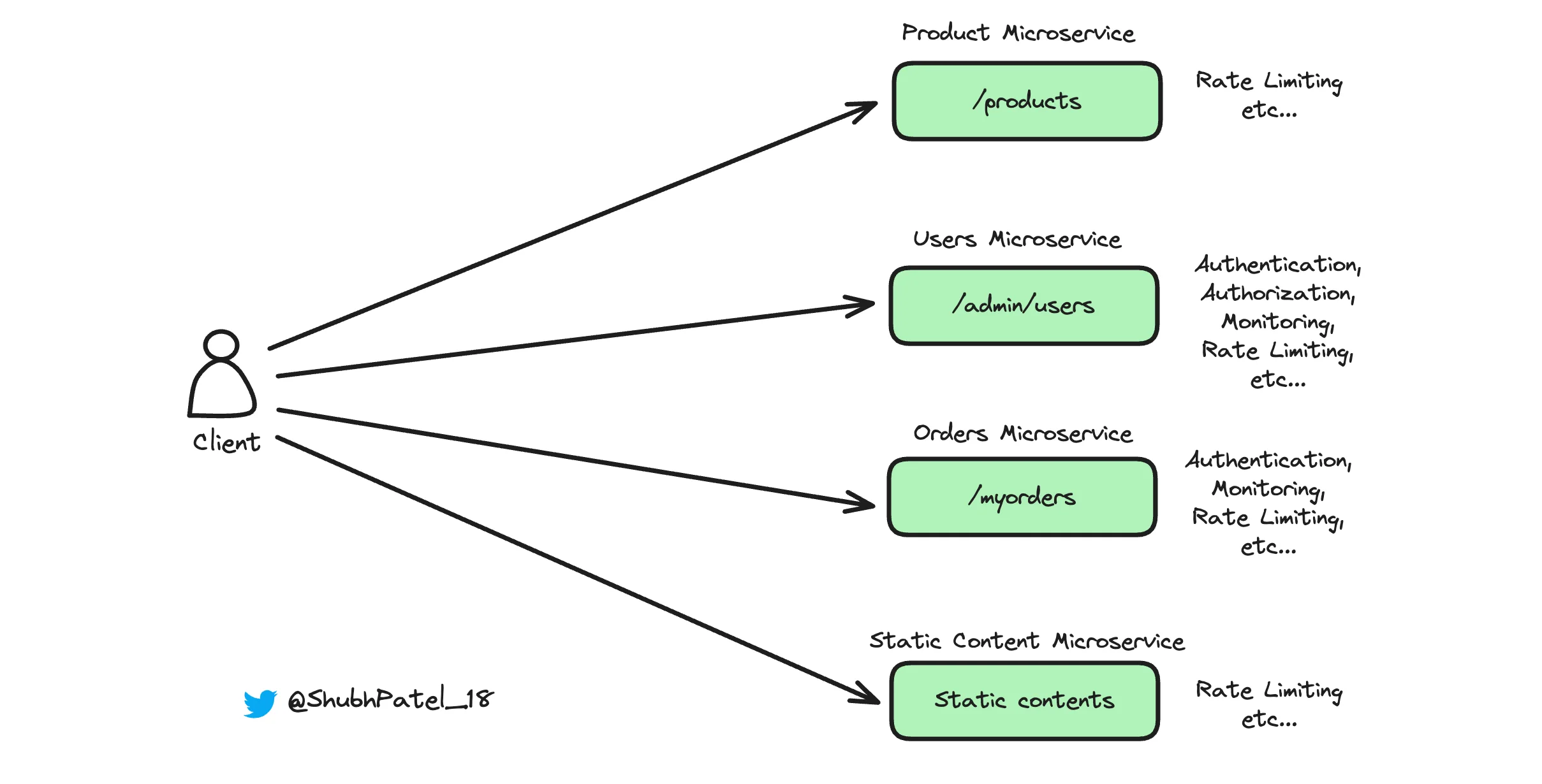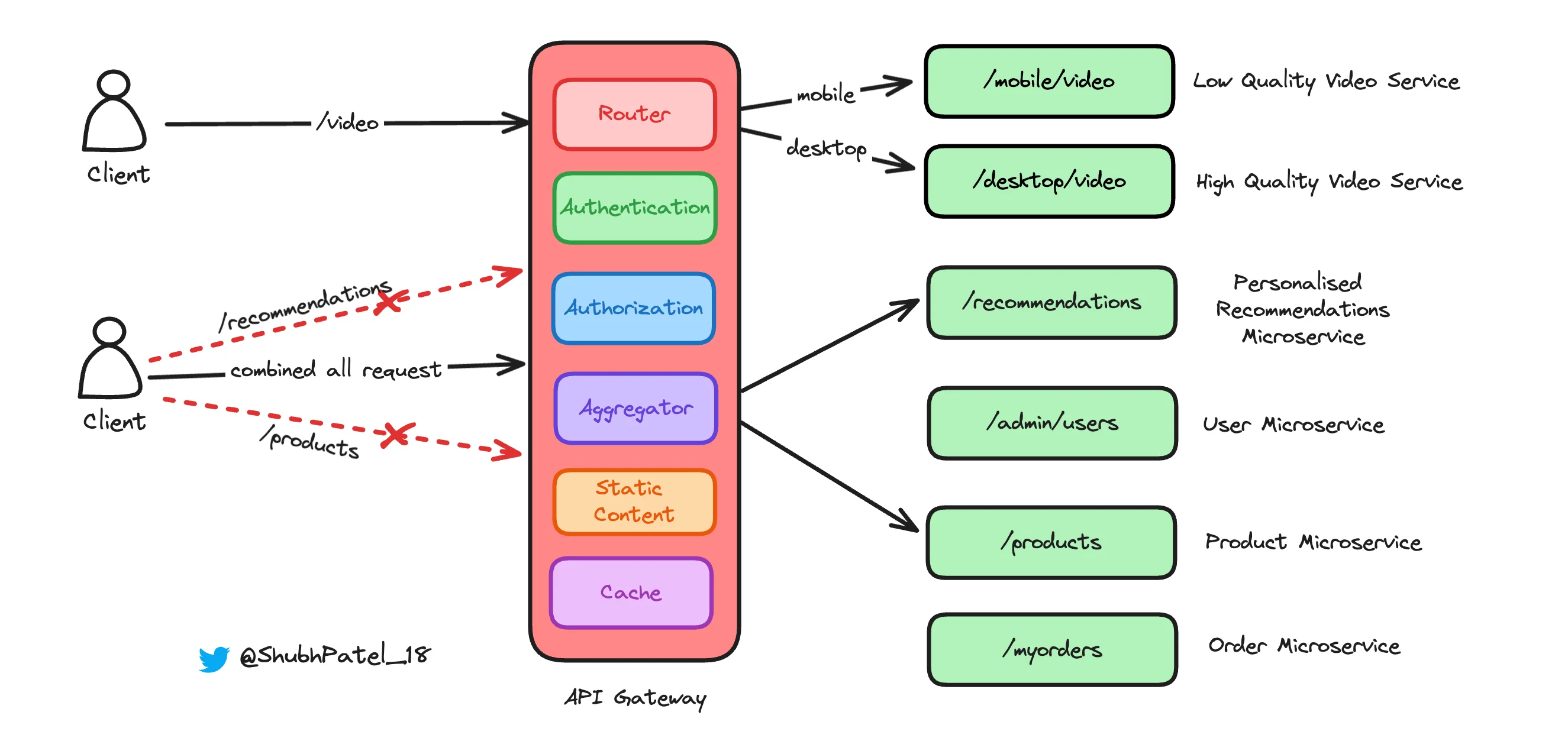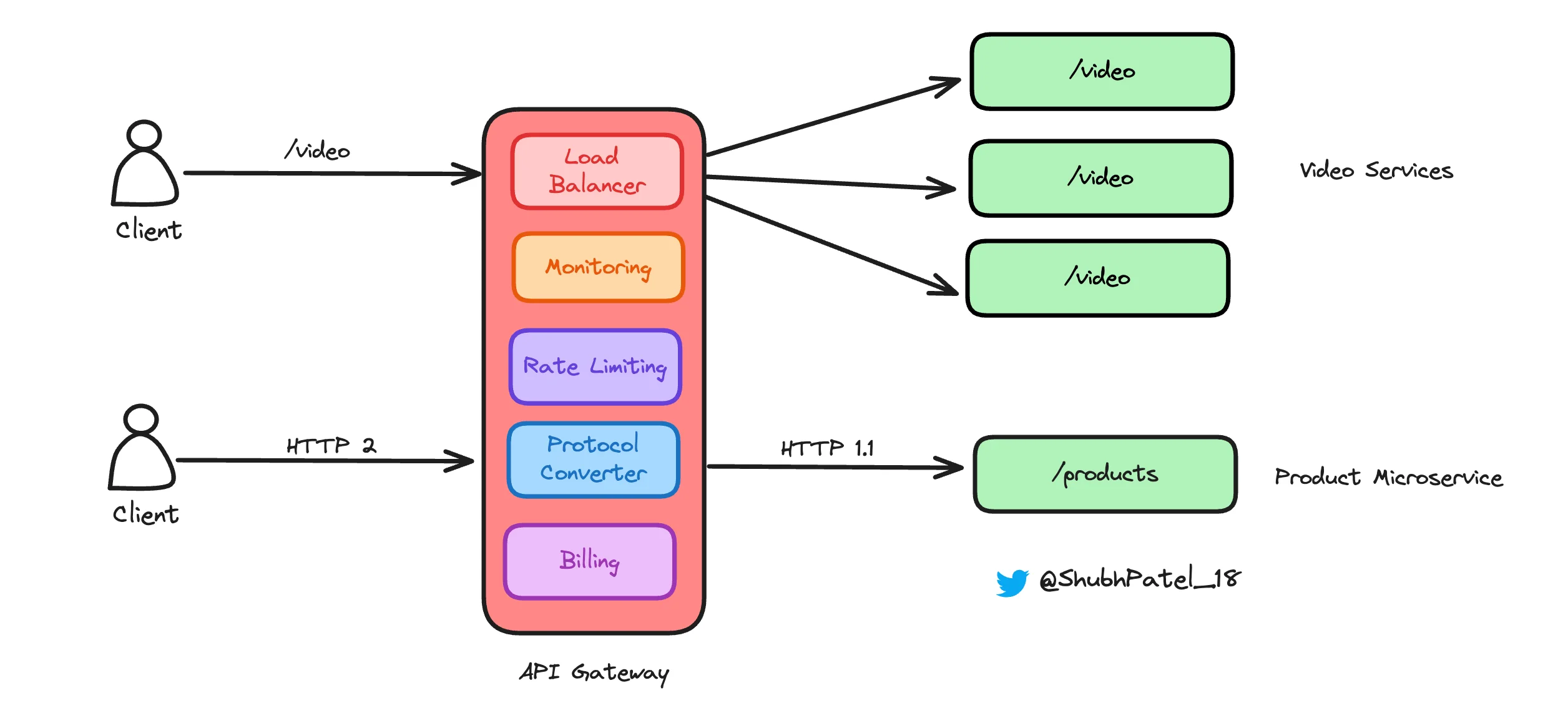API Gateway: Features and Benefits
An API Gateway serves as a single entry point for client requests in a microservices architecture, providing centralized management of various cross-cutting concerns such as authentication, authorization, rate limiting, and more.
Scenario: Without API Gateway

Without API Gateway
Imagine an e-commerce platform using a microservice architecture with services like Products, Orders, Users, and Static Content. Without an API Gateway, each microservice must handle its own cross-cutting concerns:
Examples of Cross-Cutting Concerns
-
Authentication & Authorization:
-
URLs like
/admin/usersshould be accessible only to admins, requiring authentication and authorization logic in the Users Microservice. -
URLs like
/myordersshould be accessible only to authenticated users, requiring similar logic in the Orders Microservice.
-
-
Rate Limiting:
To prevent abuse, each microservice must implement rate limiting independently.
- Monitoring:
Implementing client request and response time monitoring in each service separately is necessary for performance analysis.
Problems
-
Duplication of Effort: Each service needs to implement similar logic, leading to redundancy.
-
Maintenance Overhead: Updating shared logic across all services can be time-consuming and error-prone.
-
Inconsistent Policies: Different teams implementing security features may lead to inconsistencies.
Solution: API Gateway
An API Gateway can centralize these concerns, implementing them once and applying them across all microservices. This reduces duplication, simplifies maintenance, and ensures consistency.
Key Features of an API Gateway

Benefits of Using an API Gateway
1. Authentication
API Gateway can handle authentication by verifying client credentials (e.g., JWT tokens) before forwarding requests to microservices. This centralizes authentication logic, ensuring that only authenticated users can access resources like /myorders.
2. Authorization
After authenticating a client, API Gateway checks permissions to access specific resources. For example, only admin users can access /admin/users, ensuring secure access control across microservices.
3. Static Content Delivery
API Gateway can directly serve static content (e.g., HTML, CSS, JavaScript) without involving backend services, enhancing performance and reducing the load on microservices.
4. Caching
To improve response times and reduce load on backend services, API Gateway can cache responses for frequently requested resources. For example, /products responses can be cached to serve repeated requests quickly.
5. Aggregator
API Gateway can minimize the number of client requests by aggregating multiple microservice responses. For example, a single request to /user/{userID}/profile can fetch data from multiple services like /products, /myorders, and /recommendations.
6. Router
API Gateway can route requests to appropriate microservices based on predefined rules:
Example:
-
/user/{userID}/profilecould route requests to:-
/products -
/myorders -
/recommendations
-
-
Conditional routing based on device type:
-
If User-Agent contains 'Mobile', route to
/mobile/video. -
Otherwise, route to
/desktop/video.
-
Additional Features

Additional Benefits of API Gateway
1. Load Balancing
API Gateway can distribute incoming requests across multiple instances of the same microservice to ensure even load distribution and maintain high availability.
2. Protocol Conversion
API Gateway can convert requests between different protocols. For example, it can receive an HTTP/2 request from the client and convert it to HTTP/1.1 for a microservice that does not support HTTP/2. It can also handle WebSocket connections.
3. Rate Limiting
To prevent service abuse, API Gateway can limit the number of requests a client can make within a specified timeframe. If the limit is exceeded, the gateway responds with a rate limit exceeded message.
4. Monitoring
API Gateway provides centralized monitoring of all client requests and microservice responses, enabling detailed tracking of metrics like response time and request counts.
5. Billing
API Gateway can track the number of requests made by each client and generate billing information based on usage, which is essential for API monetization models.
AWS API Gateway allows defining quotas to restrict the total usage of an API key within a specified period, such as daily, weekly, or monthly limits.